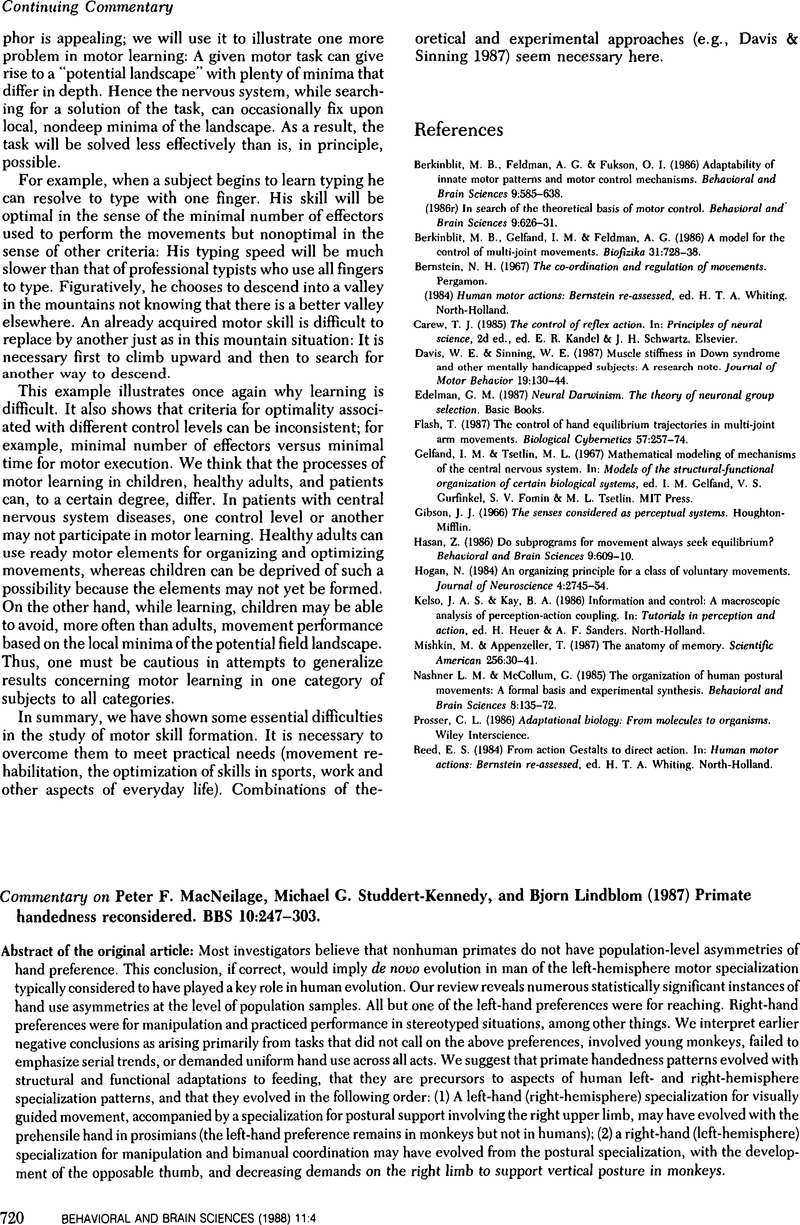Crossref Citations
This article has been cited by the following publications. This list is generated based on data provided by Crossref.
Hamilton, Charles R.
and
Vermeire, Betty A.
1988.
Complementary Hemispheric Specialization in Monkeys.
Science,
Vol. 242,
Issue. 4886,
p.
1691.
Heilbroner, Peter L.
and
Holloway, Ralph L.
1989.
Anatomical brain asymmetry in monkeys: Frontal, temporoparietal, and limbic cortex in Macaca.
American Journal of Physical Anthropology,
Vol. 80,
Issue. 2,
p.
203.
Goldberg, Elkhonon
1990.
Associative agnosias and the functions of the left hemisphere.
Journal of Clinical and Experimental Neuropsychology,
Vol. 12,
Issue. 4,
p.
467.
Hunziker, Ernst
and
Mazzola, Guerino
1990.
Ansichten eines Hirns.
p.
123.
Annett, Marian
and
Annett, John
1991.
Handedness for Eating in Gorillas.
Cortex,
Vol. 27,
Issue. 2,
p.
269.
MacNeilage, Peter F.
1993.
Primate Laterality.
p.
319.
Hopkins, William D.
and
Morris, Robin D.
1993.
Handedness in great apes: A review of findings.
International Journal of Primatology,
Vol. 14,
Issue. 1,
p.
1.
Morris, Robin D.
Hopkins, William D.
Gilmore, Linda Bolser
and
Washburn, David A.
1993.
Primate Laterality.
p.
207.
Lehman, Ralph A. W.
1993.
Primate Laterality.
p.
149.
1994.
Lateralization of frontal lobe functions and cognitive novelty.
The Journal of Neuropsychiatry and Clinical Neurosciences,
Vol. 6,
Issue. 4,
p.
371.
Vermeire, Betty A.
and
Hamilton, Charles R.
1998.
Effects of Facial Identity, Facial Expression, and Subject's Sex on Laterality in Monkeys.
Laterality: Asymmetries of Body, Brain and Cognition,
Vol. 3,
Issue. 1,
p.
1.
Anderson, James R
1998.
Social stimuli and social rewards in primate learning and cognition.
Behavioural Processes,
Vol. 42,
Issue. 2-3,
p.
159.
Rogers, Lesley J.
2018.
Cerebral Lateralization and Cognition: Evolutionary and Developmental Investigations of Behavioral Biases.
Vol. 238,
Issue. ,
p.
91.
Aychet, Juliette
Monchy, Noémie
Blois-Heulin, Catherine
and
Lemasson, Alban
2022.
Context-Dependent Gestural Laterality: A Multifactorial Analysis in Captive Red-Capped Mangabeys.
Animals,
Vol. 12,
Issue. 2,
p.
186.
Rossion, Bruno
and
Lochy, Aliette
2022.
Is human face recognition lateralized to the right hemisphere due to neural competition with left-lateralized visual word recognition? A critical review.
Brain Structure and Function,
Vol. 227,
Issue. 2,
p.
599.



